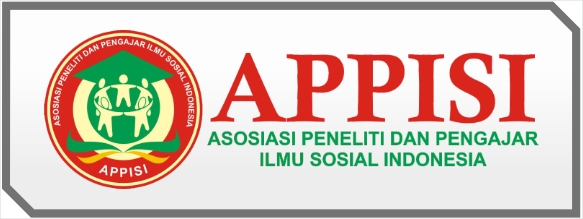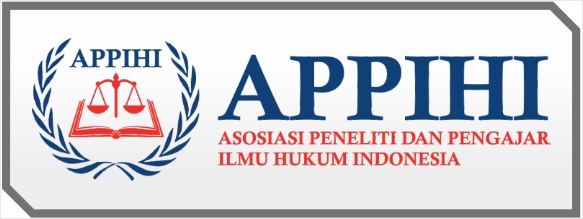Analisis Penataan Perkampungan Kumuh
(Studi pada Kelurahan Oimbo Kecamatan Rasanae Timur Kota Bima)
DOI:
https://doi.org/10.59581/jhsp-widyakarya.v1i1.4467Keywords:
analysis, arrangement, village, slumAbstract
Research objectives: 1) To find out the arrangement of slums through restoration (rehabilitation) in Oimbo Village, Bima City? 2) To find out the arrangement of slums through rejuvenation (revitalization) in Oimbo Village, Bima City? 3) To find out the arrangement of slums through resettlement (relocation) in Oimbo Urban Village, Bima City? This type of research is descriptive qualitative. Data collection techniques are interviews, observation, and documentation. Informants in this study included the Head of Kelurahan and staff/employees and community leaders in Kelurahan Oimbo Kota Bima. Determination of informants in this research the author uses purposive sampling technique. The analysis technique used is descriptive qualitative analysis, which starts from data reduction, data display, and verification and conclusion making. The results of the research are: first, related to the arrangement of slums through restoration (rehabilitation) in Oimbo Village, Bima City, has been carried out well according to the needs of residents. Second, the arrangement of slums through rejuvenation (revitalization) in Oimbo Village, Bima City, has been carried out well according to the needs of the residents. Third, the arrangement of slums through resettlement (relocation) has been carried out well according to the needs of residents.
References
Arikunto, S. (2017). Prosedur penelitian: Suatu pendekatan praktek. Jakarta: Rineka Cipta.
Balai Pengembangan dan Pembinaan Bahasa. (2017). Kamus Besar Bahasa Indonesia. Jakarta: Balai Pengembangan dan Pembinaan Bahasa Kemdikbud.
Barata, A. A. (2003). Dasar-dasar pelayanan prima. Jakarta: Yudhistira.
Basrowi, & Suwandi. (2008). Memahami penelitian kualitatif. Jakarta: Rineka Cipta.
Bevaola, & Nuh, M. (2012). Reformasi birokrasi publik di Indonesia. Yogyakarta: Pusat Studi Kependudukan dan Kebijakan (PSKK) UGM.
Budihardjo, E. (2009). Tata ruang perkotaan. Bandung: Alumni.
Daldjoeni. (2002). Seluk beluk masyarakat kota: Pusparagam sosiologi kota dan ekologi sosial. Bandung: Alumni.
Fadhilah, P. (2003). Paradigma kritis dalam studi kebijakan publik dan ruang partisipasi dalam proses kebijakan publik. Yogyakarta: Pustaka Pelajar Offset.
Hadi, S. Y. (2001). Struktur tata ruang kota. Yogyakarta: Pustaka Pelajar.
Hardiansyah. (2018). Kualitas pelayanan publik. Yogyakarta: Gava Media.
Hariyono, P. (2007). Sosiologi kota untuk arsitek. Jakarta: Bumi Aksara.
Haryatmoko. (2011). Etika publik untuk integritas pejabat publik dan politis. Jakarta: Gramedia Pustaka Utama.
Herlianto. (2006). Urbanisasi dan pembangunan kota. Bandung: Alumni.
Kuswartojo, T. (2005). Perumahan dan pemukiman di Indonesia. Bandung: Penerbit ITB.
Lukman, M. (2013). Badan layanan umum: Dari birokrasi menuju korporasi. Jakarta: Bumi Aksara.
Mahmudi. (2010). Manajemen kinerja sektor publik. Yogyakarta: Sekolah Tinggi Ilmu Manajemen YKPN.
Putra, F., & Arif, S. (2001). Kapitalisme birokrasi: Kritik reinventing government Osborne-Gaebler. Yogyakarta: LKIS.
Sugiyono. (2017). Metode penelitian administrasi. Bandung: Alfabeta.
Suparlan, P. (2014). Kemiskinan di perkotaan. Jakarta: Yayasan Obor Indonesia.
Sutrisno, E. (2016). Manajemen sumber daya manusia. Jakarta: Kencana.
Tjiptono, F. (2012). Service management. Yogyakarta: Andi Offset.
Yuniarsih, T., & Suwatno. (2013). Manajemen sumber daya manusia. Bandung: Alfabeta.
Downloads
Published
How to Cite
Issue
Section
License
Copyright (c) 2023 Bayu Budiansyah

This work is licensed under a Creative Commons Attribution-ShareAlike 4.0 International License.













